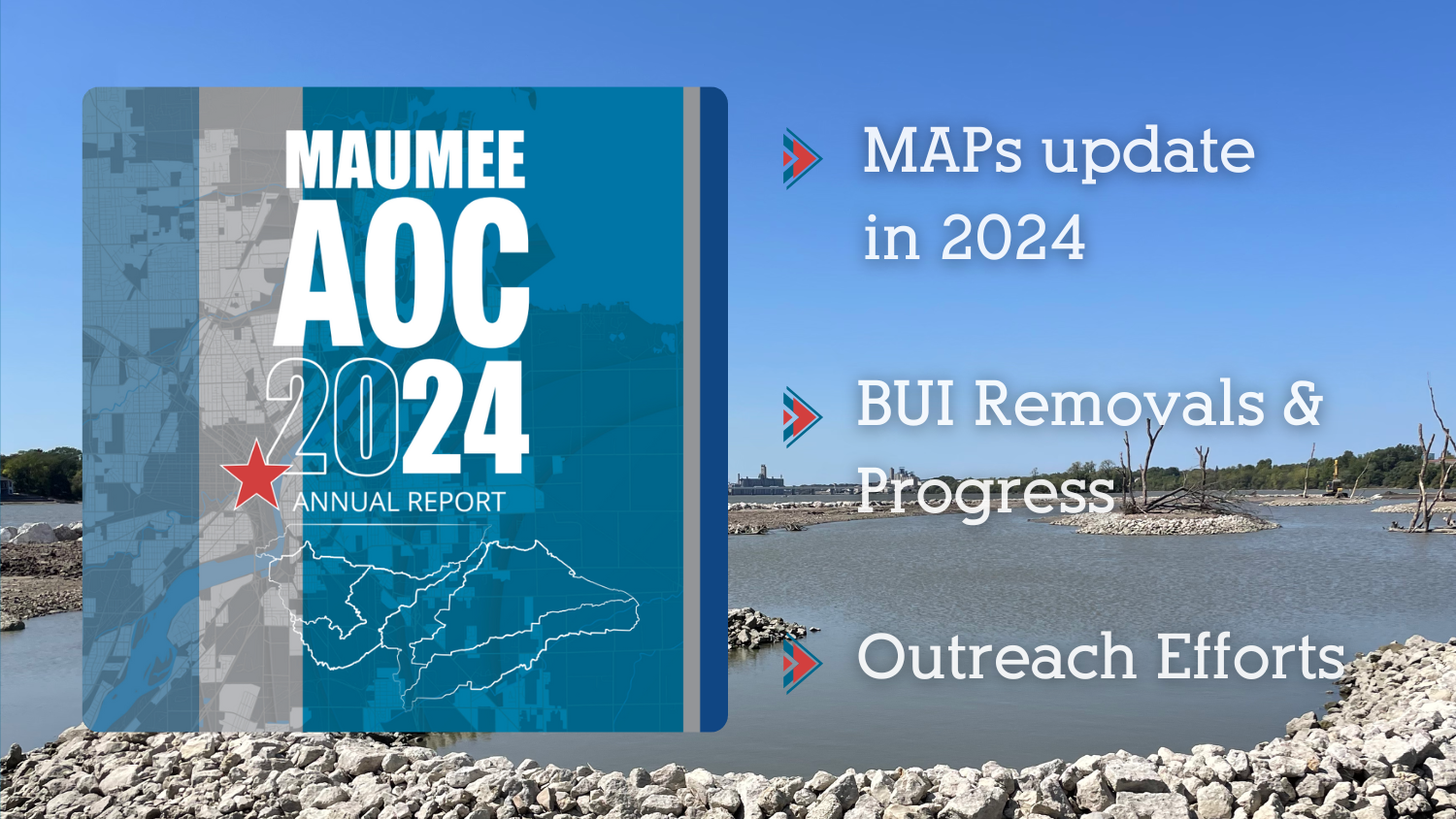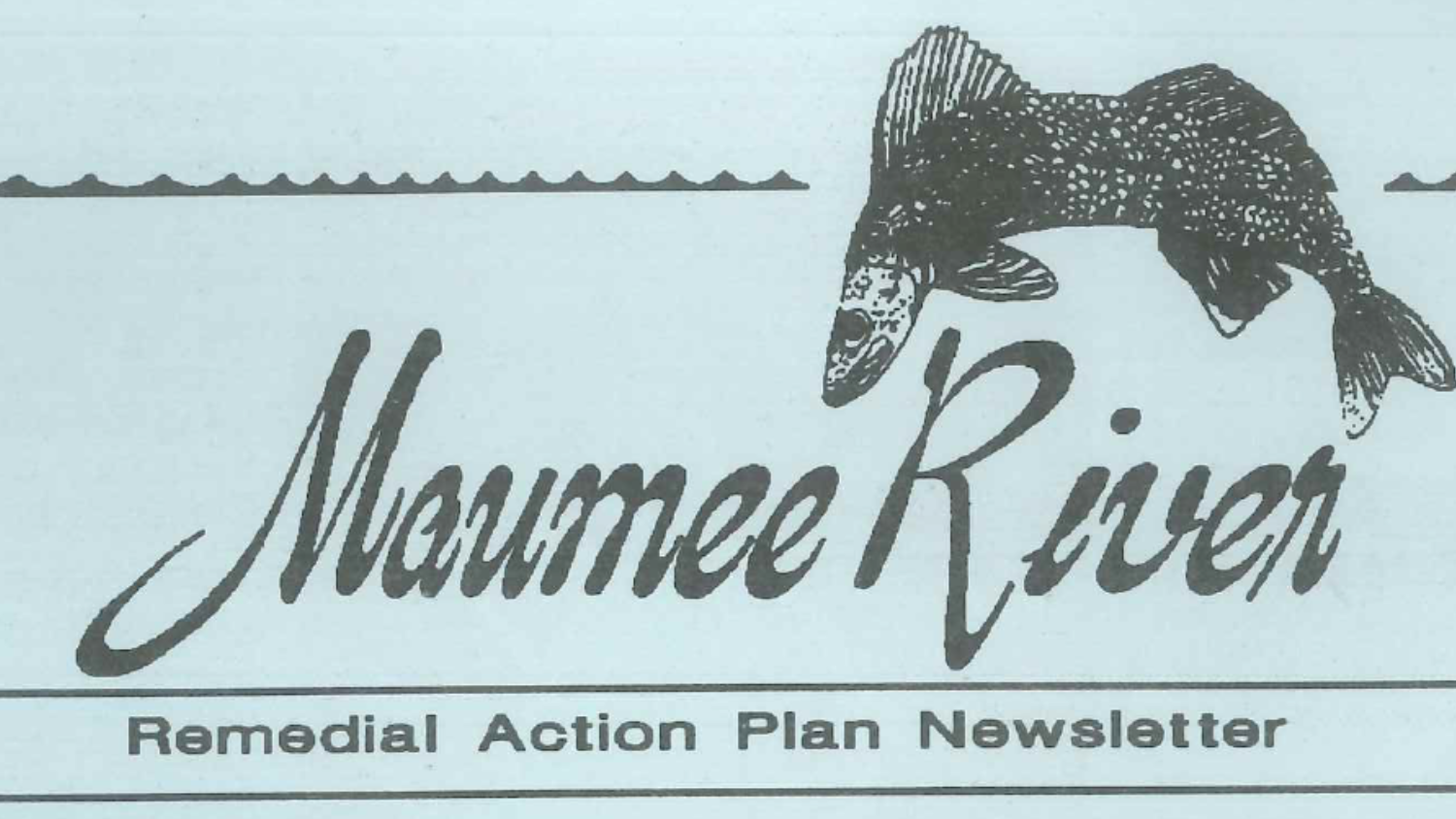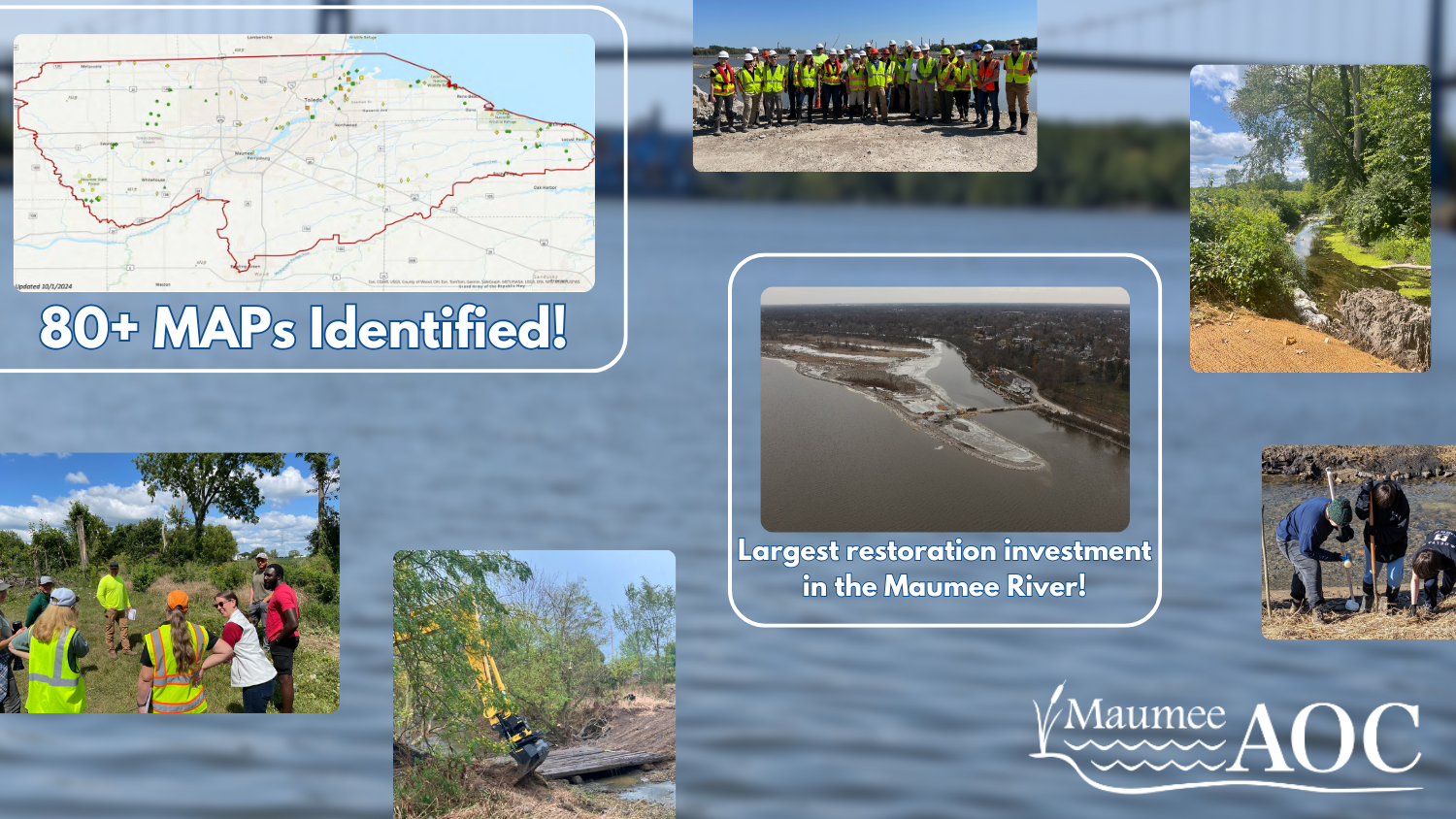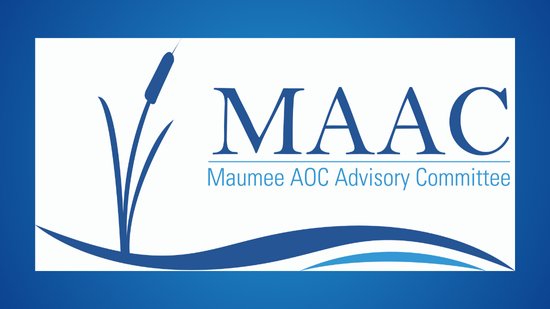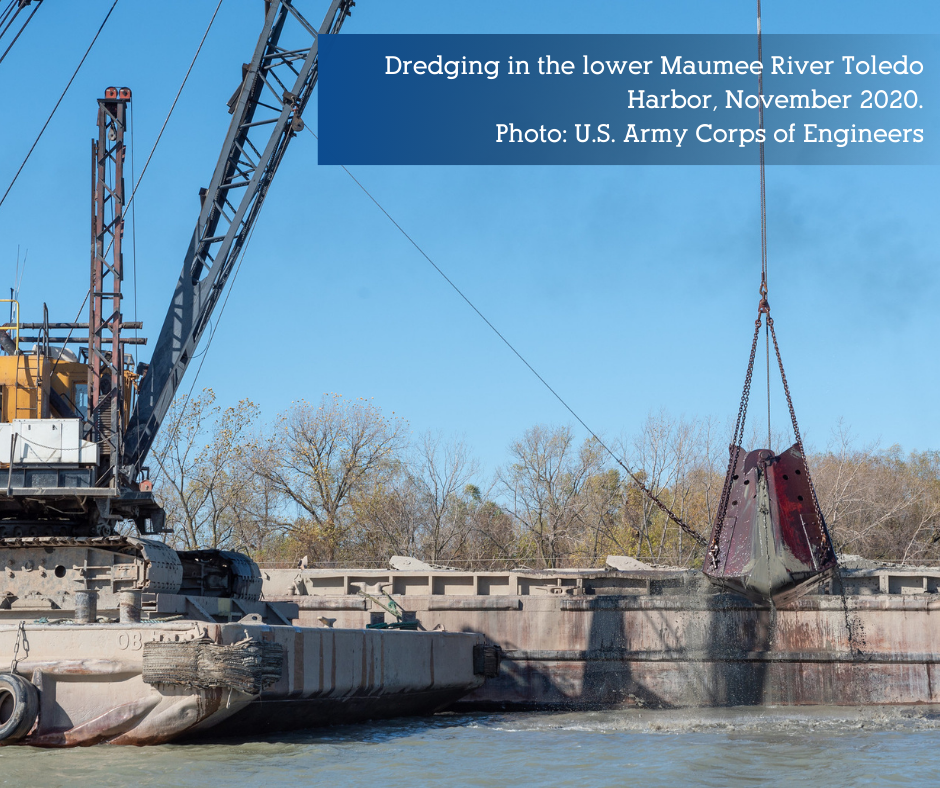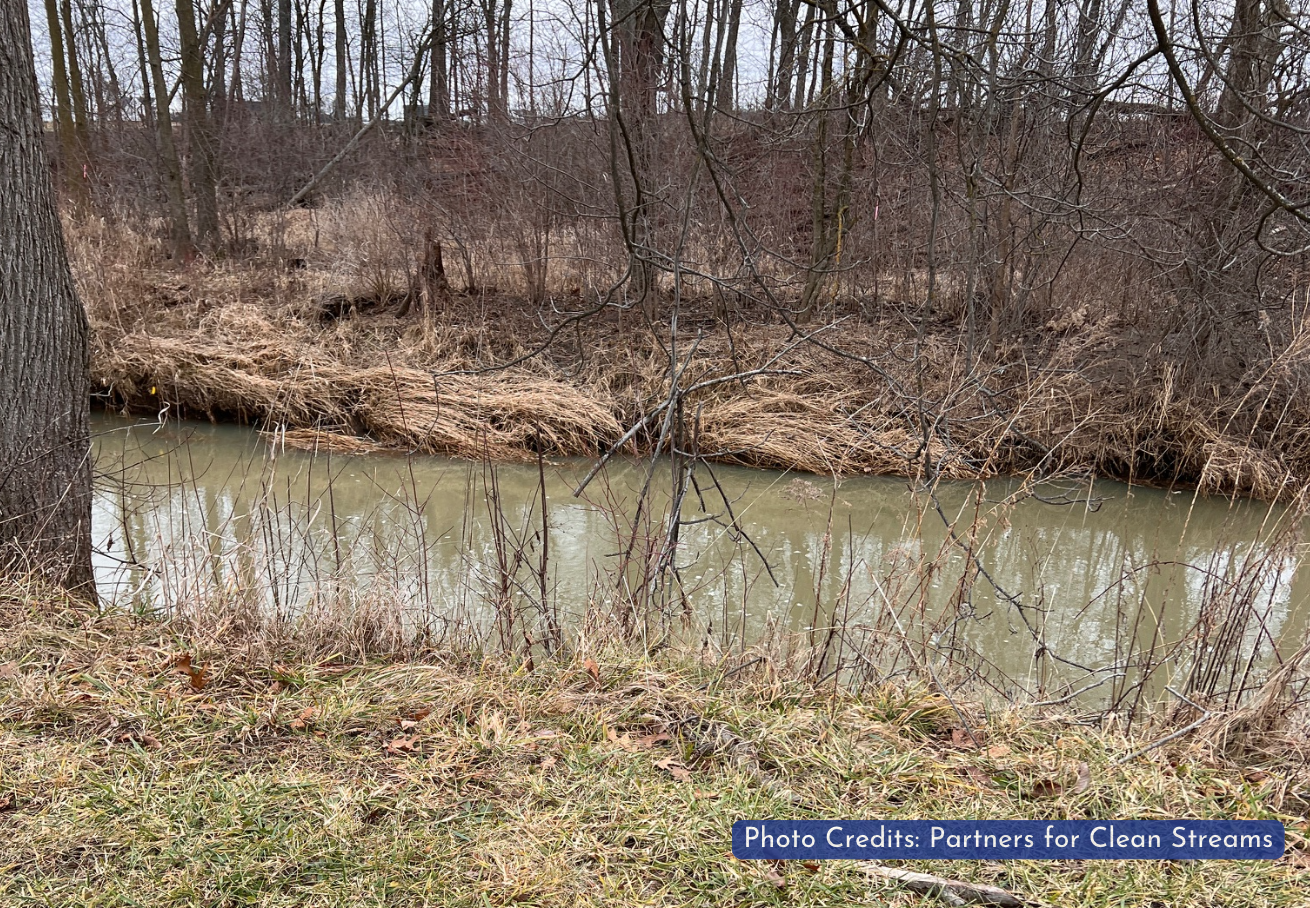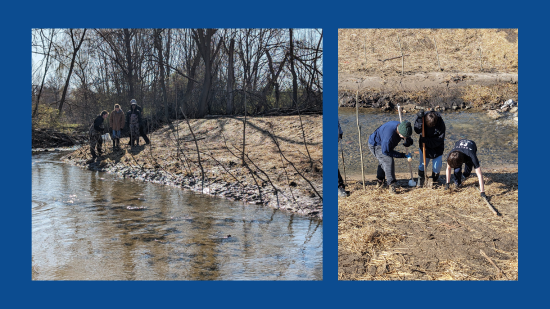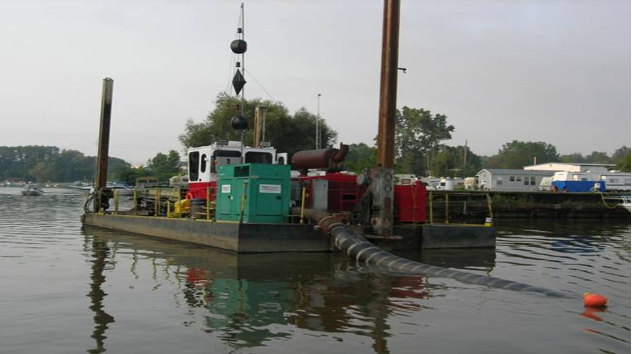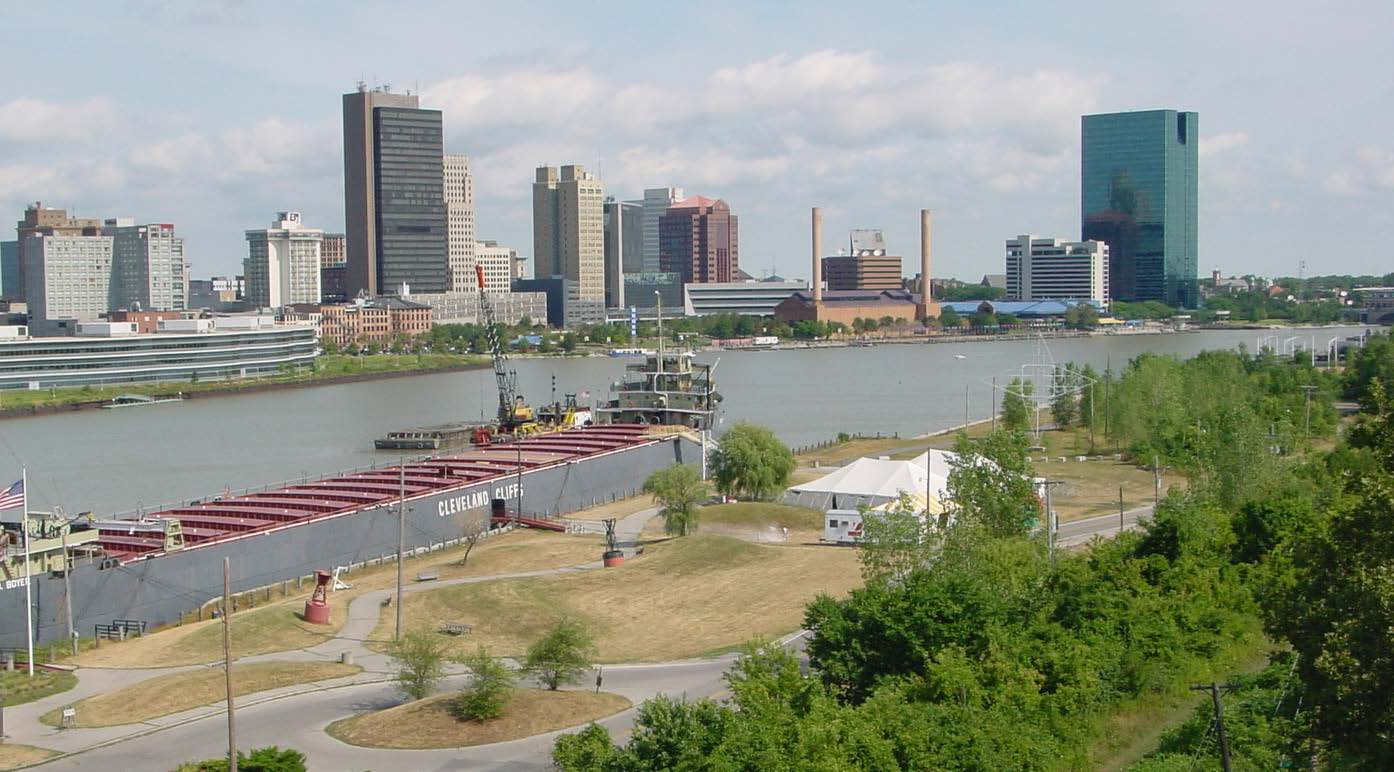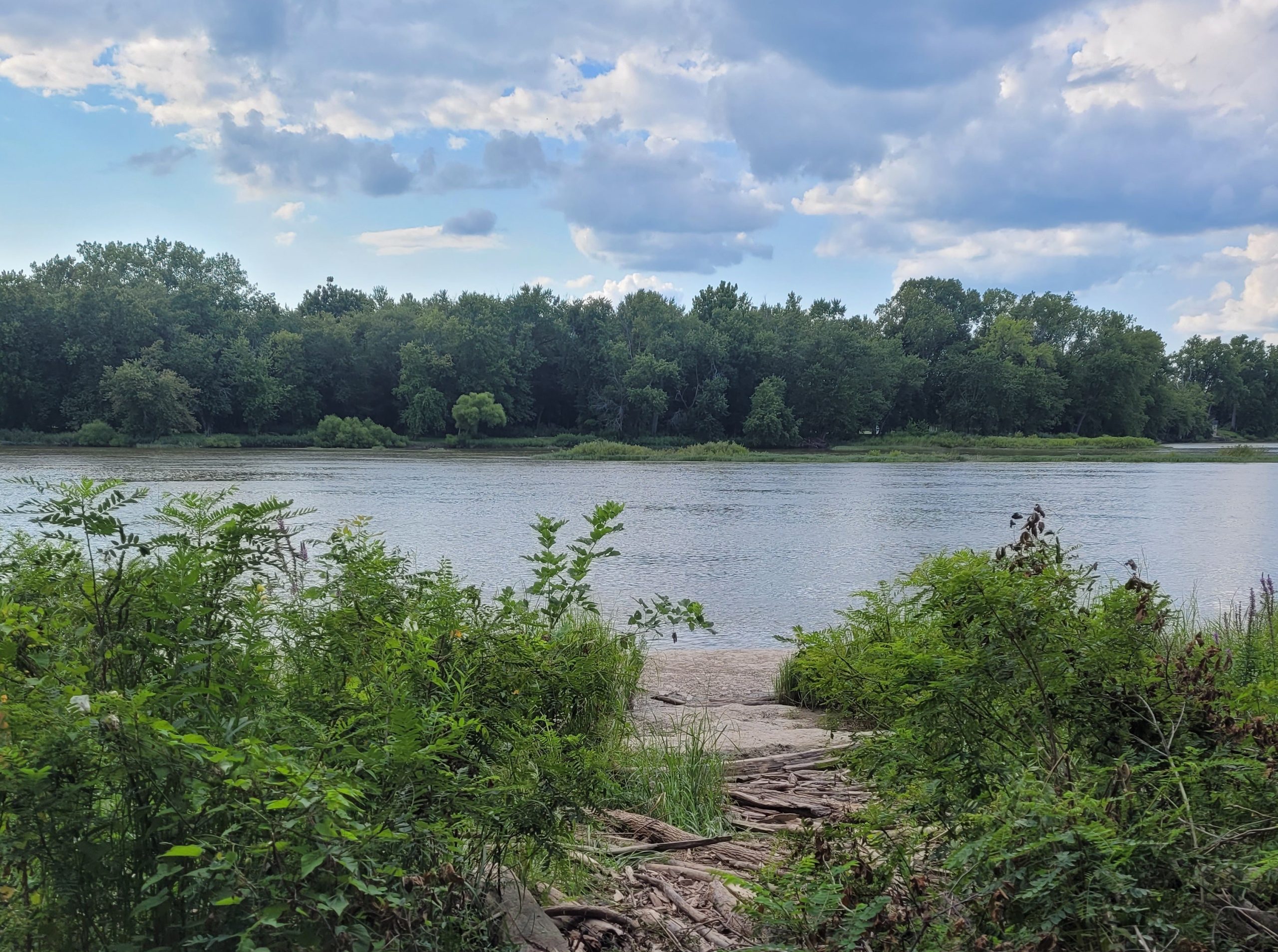The Maumee AOC 2024 Annual Report is here! We’ve removed another BUI, expanded our outreach and education through the MAAC, and continue making solid progress on all the Management Action Projects. And with the spring weather warming up, things are really starting to pick up in the Maumee AOC! Read it here! A physical copy […]
Read MoreNews
A Blast from the Past!
Who doesn’t enjoy a trip down memory lane? We’ve dusted off some classic issues of the Maumee River Remedial Action Plan newsletter from 1990, and we’re excited to share these throwback articles with you!! A lot has changed over the past 35 years, but these newsletters still offer valuable insights, familiar names, a great education […]
Read MoreA Look Back at 2024
2024 was a busy year for the Maumee AOC! We could go on and on about all the progress, completed projects, and groundbreaking that happened this year, but for now we’ll share some of the highlights.
Join the Maumee AOC Advisory Committee (MAAC)
The Ohio EPA and Partners for Clean Streams invite passionate individuals to apply for the Maumee AOC Advisory Committee (MAAC). Find the application here. If you’re committed to enhancing our region’s ecosystem health, we encourage you to get involved. MAAC advises state and federal partners on key projects to improve the Maumee Area of Concern […]
Read MoreBUI 7 Officially Removed in Maumee AOC!
The Maumee Area of Concern and surrounding waterways are making progress towards their restoration goals thanks to recent developments. BUI 7: Restrictions on Dredging Activities has now been approved for removal from the list after acceptance from US EPA and the Great Lakes National Program Office (GLNPO)! This is the fourth of ten beneficial use […]
Read MoreProject Feature: Stream Restoration at Lathrop Park
Starting in 2021, a stream restoration project was developed for Lathrop Park located in Berkey, Ohio. The proposed work for this project includes restoration of 0.75 acres of riparian buffer, stabilization of 600 feet of eroding streambank, creation/enhancement of 165 feet of riffle habitat, restoring a riffle-pool sequence across the site, and enhancing in-stream habitat […]
Read MoreToledo Public Schools Students Help with Hill Ditch Restoration Project
The Hill Ditch Restoration at Toledo Natural Science Technology Center project is nearly complete! These efforts focused on creating instream and floodplain habitat for fish and benthos by stabilizing streambanks against erosion, targeting BUI 6 and BUI 14a. This site is utilized by Toledo Public Schools and their Natural Science Technology Center (NSTC) as an […]
Read MoreClark Island and Delaware/Horseshoe Islands Water Quality & Habitat Improvement Projects
The beginning stages of construction for the Clark Island and Delaware/Horseshoe Islands restoration projects are underway! Construction of the first temporary construction causeway began on January 8, 2024. Construction groundbreaking celebration events were held on January 23 that included a media event with speakers followed by an open community reception. The community has demonstrated their […]
Read MoreGLLA Work in the Maumee AOC
One of the fundamental pieces of improving Beneficial Use Impairments is locating and addressing significant chemical contamination in the sediments in the waterways of the Area of Concern (AOC). Those chemicals of concern in the sediments are often from historical industrial contamination of the past. In the Maumee AOC, there is ongoing Great Lakes Legacy […]
Read MoreProject Feature: Reducing the Impact of Chlorides
Every winter, rain and snow wash road salt into our ditches, streams, and rivers, which degrades water habitats by adding excess chlorides. Too much salt can be toxic for macroinvertebrates and fish. Experts agree that cutting down pollution at its sources will have a positive impact. Last year, a team of three MAAC collaborators began […]
Read More2023 Year In Review
Highlights, Management Action Project milestones, public involvement, outreach, and more.
Read MoreU.S. EPA Removes ‘Degradation of Aesthetics’ Impairment Designation from Maumee Area of Concern
(Via Ohio Lake Erie Commission) Conditions in the Maumee Area of Concern (AOC), one of the largest AOCs in the eight Great Lakes states, have vastly improved over the last 30 years, bringing the Maumee AOC one step closer to full restoration. These improved conditions are a result of reducing sources of oil, grease, and […]
Read MoreBUI 11 Removal Package Recommended for Approval
The Ohio Lake Erie Commission and Ohio EPA are recommending the removal of BUI 11, Degradation of Aesthetics, in the Maumee Area of Concern. At the May MAAC meeting, the Committee will be asked for concurrence with the recommendation before it moves to US EPA and the International Joint Commission for approval. A public comment […]
Read MoreProject Feature: Beach Improvements at Maumee Bay State Park
Maumee Bay State Park is a 1,336-acre public recreation area on the shores of Lake Erie. In 2021, work began on the park’s inland lake swimming beach to address BUI 10: Beach Closings. Persistent, elevated fecal indicator bacteria frequently cause this beach to have an advisory posted against it being used for recreation. Studies showed […]
Read MoreHill Ditch Restoration at Toledo NST Center
Hill Ditch Restoration at Toledo Natural Science Technology Center: This project focuses on creating instream and floodplain habitat for fish and benthos by stabilizing streambanks against erosion.
Read MoreMaumee River Islands Restoration Plans – Public Open House
The Toledo-Lucas County Port Authority, City of Toledo, and the Maumee AOC Advisory Committee (MAAC) are hosting a public open house to share new and refined draft designs and to seek input for these plans intended to help improve water quality and aquatic habitat while helping to restore and protect Clark Island and Delaware/Horseshoe Islands. […]
Read MoreManagement Action Project Status Going Into 2023
Last year was a productive one for management action projects securing funding and reaching completion. For Wildlife Management Action Projects, 75% (15 of 20) were complete by the end of 2022, expanding habitat for key species in the Maumee AOC, such as the sandhill crane and wild turkeys. For Aquatic Management Action Projects, combining both […]
Read MoreProject Feature: Maumee Bay Wetland Restoration
Maumee Bay State Park is a 1,336-acre public recreation area on the shores of Lake Erie. In 2022, construction got underway and completed on a wildlife habitat management action project focused on enhancing the park’s wetlands. This project enhances about 130 acres of critical wildlife habitat around the shores of Lake Erie, an area that […]
Read MoreNew Educational Materials Ready for Distribution
This year, the Maumee AOC’s facilitating organization, Partners for Clean Streams, had the opportunity to order hard copies of eight different management action project “rack cards,” as well as our updated Maumee AOC informational brochure. PCS would like to get these educational materials out into the community to keep residents informed about efforts to improve […]
Read More2022 Year In Review
Highlights: BUI 1, Restrictions on Fish and Wildlife Consumption, was removed! Management Action Projects: AquaMAPs – 32 of 35 projects are funded and several projects are underway. SedMAPs – 3 of 8 projects are fully funded, while the remaining 5 are partially funded. The 3 funded projects are completed as of November 2022. WildMAPs – […]
Read More
